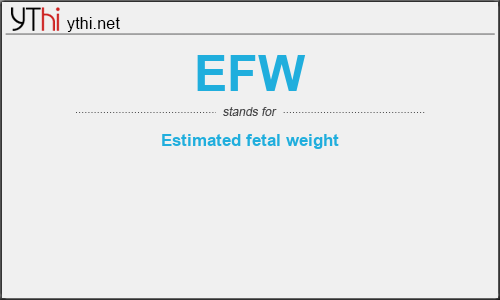What does EFW mean? What is the full form of EFW?
The Full Form of EFW is Estimated fetal weight.
To formulate reference charts and equations for estimated fetal weight (EFW) from a large sample of fetuses and to compare these charts and equations with those obtained for birth weight during the same study period and in the same single health authority.
Methods
Biometric data were obtained at 20–36 weeks’ gestation from routine screening examinations spanning 4 years. Exclusion criteria were a known abnormal karyotype or congenital malformation and multiple pregnancy. No data were excluded on the basis of abnormal biometry. EFW was calculated based on Hadlock’s formula. We used a polynomial regression approach (mean and SD model) to compute a new reference chart for EFW. This chart was compared with that of birth weight at 25–36 weeks’ gestation during the same study period and in the same health authority.
Results
18 959 fetuses were included in the study. New charts and equations for Z‐score calculations at 20–36 weeks’ gestation are reported. Comparison with the birth‐weight chart showed that the EFW was noticeably larger at 25–36 weeks’ gestation. At 28–32 weeks’ gestation, the 50th centile for birth weight compared approximately with the 10th centile for EFW.
Conclusion
We present new reference charts and equations for EFW. EFW is computed throughout gestation based on measurements in healthy fetuses. However, before full term, birth‐weight charts reflect a significant proportion of growth‐restricted fetuses that deliver prematurely. We provide additional evidence that comparing EFW with birth‐weight charts is misleading. Copyright © 2007 ISUOG. Published by John Wiley & Sons, Ltd.
EFW
means
Estimated fetal weight![]()
Translate Estimated fetal weight to other language.


Leave a Reply
You must be logged in to post a comment.